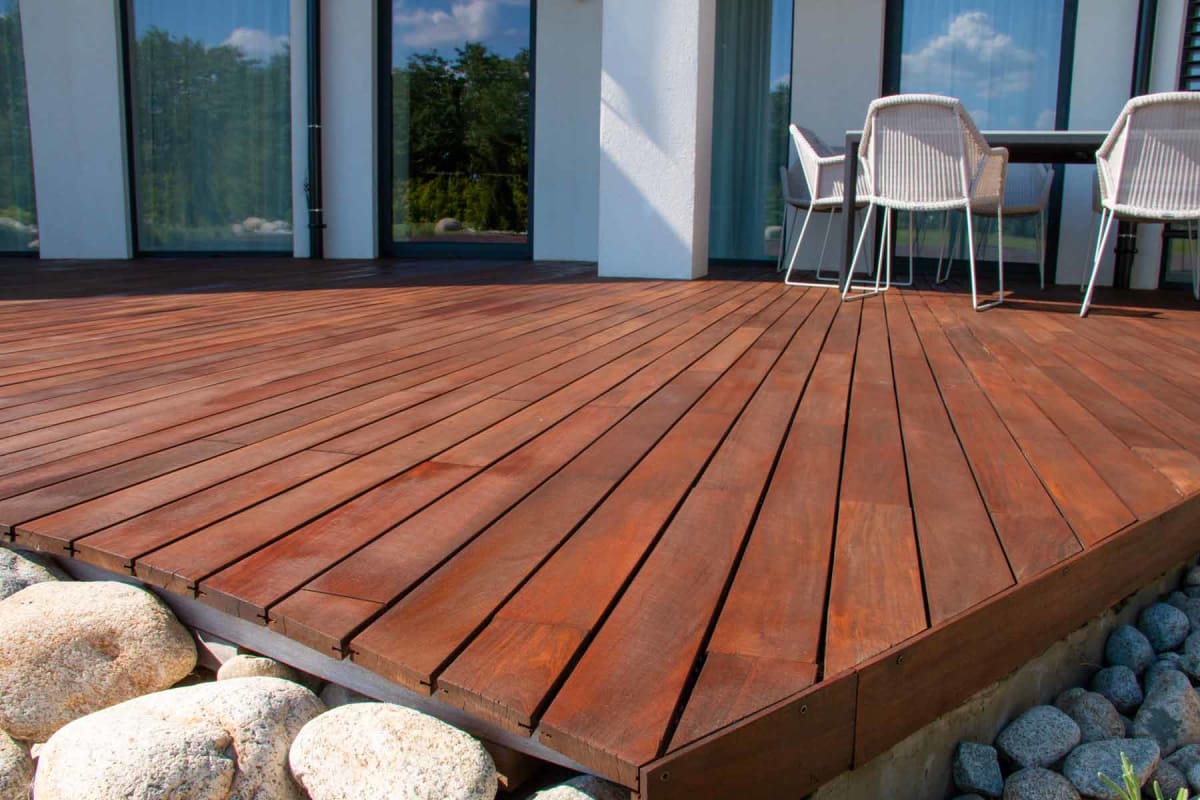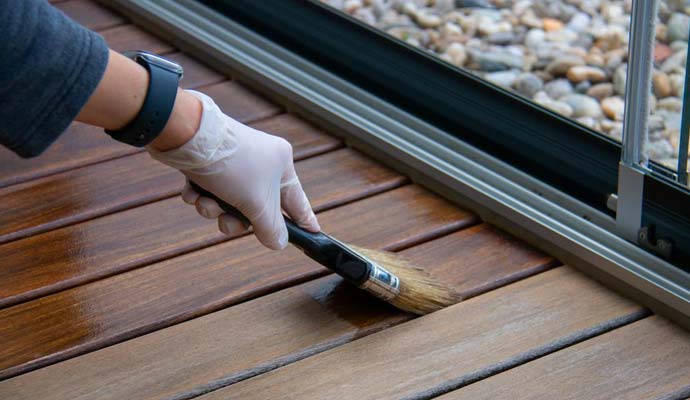Deck Discoloration 101: Every Little Thing You Required to Know for a Do It Yourself Job
When it pertains to improving the long life and appearance of your deck, one crucial element commonly ignored appertains staining. A well-executed deck discoloration job can not only revitalize the appearance of your outside space yet additionally secure it from the elements for several years ahead. The process includes even more than just using a coat of tarnish. From preparing the deck surface area to choosing the right kind of discolor and understanding the application methods, each step plays an essential duty in accomplishing a professional coating. Join us as we decipher the important standards and insider pointers for grasping the art of deck discoloration, making sure a successful do it yourself task that will leave your deck looking impeccable.
Relevance of Deck Staining
Deck discoloration is an important maintenance task that preserves the longevity and appearance of outdoor wooden structures. By using a layer of tarnish to the deck's surface area, you develop a safety obstacle that aids protect against dampness penetration, UV damages, and deteriorating of the wood.
It provides a possibility to personalize the look of the deck by selecting from a variety of tarnish colors and coatings. In significance, regular deck discoloration is an easy yet effective method to ensure your deck continues to be structurally sound and visually pleasing for years to come.
Deck Prep Work Steps

After cleansing and fixing, fining sand the deck is necessary to smooth out rough surfaces and open up the wood's pores to better absorb the stain. When the deck is clean, dry, and smooth, secure any close-by plants, furnishings, or surfaces with a drop fabric before using the deck stain.
Selecting the Right Discoloration
Selecting the suitable discolor for your deck is a crucial choice that straight affects both its appearance and resilience. When selecting the ideal discolor, there are a number of variables to take into consideration to guarantee a successful DIY task.
To start with, you need to choose in between transparent, semi-transparent, and solid discolorations. Transparent stains enable the natural grain of the timber to show through yet provide minimal defense against UV rays and moisture. Semi-transparent stains give a compromise in between color and defense, while solid spots offer the most defense but cover the timber grain.
Next, think about the kind of wood your deck is constructed from, as different spots function better with specific timber species. For instance, redwood and cedar decks often look finest with a semi-transparent or clear stain to highlight their all-natural charm. Pressure-treated wood web link may gain from a solid stain to conceal blemishes.
Lastly, consider the climate in your area. If you experience severe winter seasons or intense sunshine, choose a tarnish with UV security and resistance to severe weather conditions. By meticulously considering these aspects, you can select a discolor that improves your deck's aesthetics and longevity.

Applying Stain Appropriately
When taking into consideration the application of stain to your deck, it is vital to pay very close attention to the specific qualities of the discolor picked and just how it interacts with the sort of wood and environmental conditions previously pondered. Prior to beginning the discoloration procedure, make certain that the deck surface area is tidy, completely dry, and without any previous finishings or particles. It is suggested to check the picked tarnish on a tiny low-profile area of the deck to make sure compatibility and accomplish the wanted shade and finish.
Use the discolor along the length of the deck boards to stop uneven pooling - fence staining nashville. It is crucial to work with the timber grain to improve the all-natural charm of the deck and permit for much better infiltration of the stain.
Upkeep and Care Tips

One more essential element of deck upkeep is protecting it from the elements. Regularly trimming close-by vegetation can additionally prevent leaves and branches from gathering on your deck and causing potential damage.
Verdict
To conclude, deck Visit This Link staining is a vital action in maintaining the appearance and longevity of your outside area. By effectively preparing the deck, picking the appropriate stain, using it appropriately, and complying with maintenance tips, you can ensure a durable and beautiful finish that will certainly last for many years to find. Remember to regularly evaluate and care for your discolored deck to keep it looking its ideal.
Join us as we untangle the crucial guidelines and insider tips for understanding the art of deck staining, guaranteeing an effective DIY project that will certainly leave your deck looking flawless. - deck staining nashville
In essence, normal deck discoloration is a simple yet reliable method to ensure your deck remains structurally audio and visually pleasing for years to come.
Once the deck is clean, completely dry, and smooth, secure any close-by plants, furniture, or surface areas with a drop fabric prior to applying the deck tarnish.Next, think about the kind of wood your deck is made of, as various stains work much better with certain wood varieties.When thinking about the application of tarnish to your deck, it is important to pay close focus to the specific qualities of the tarnish chosen and how it connects with the kind of wood and environmental problems formerly deliberated.